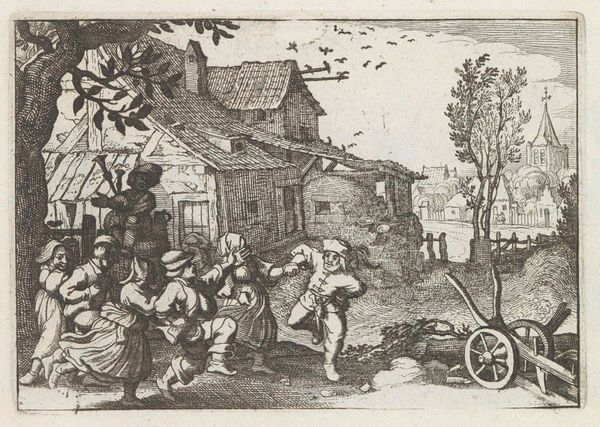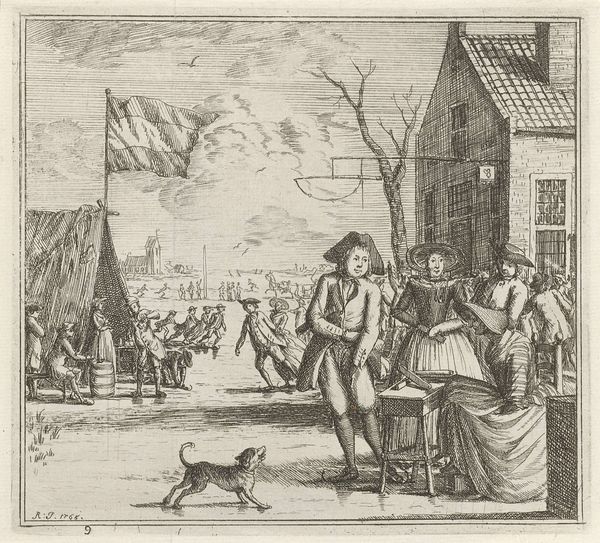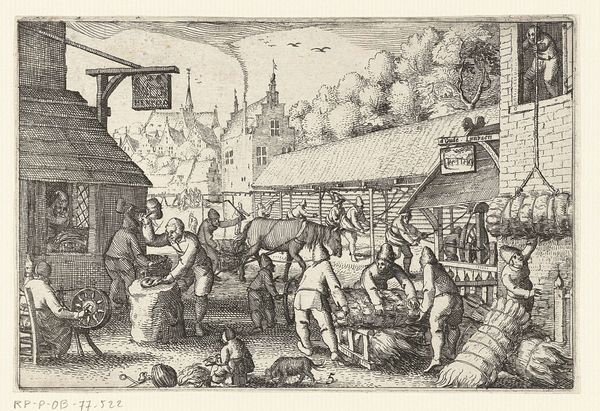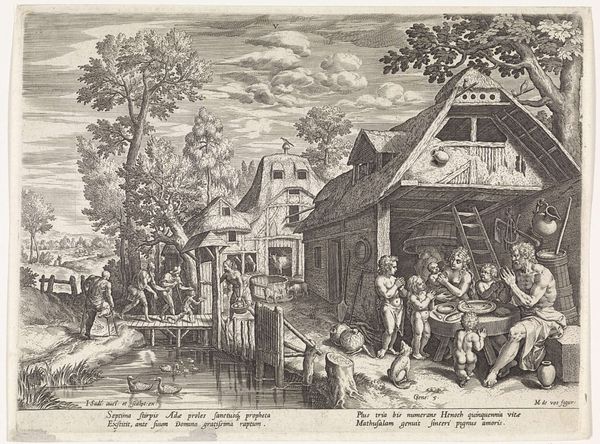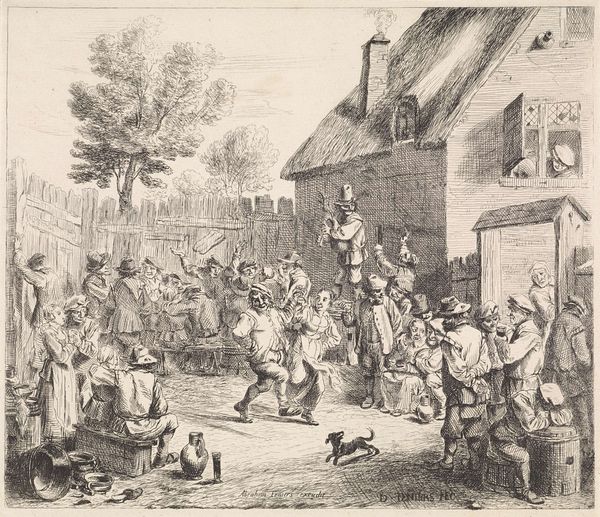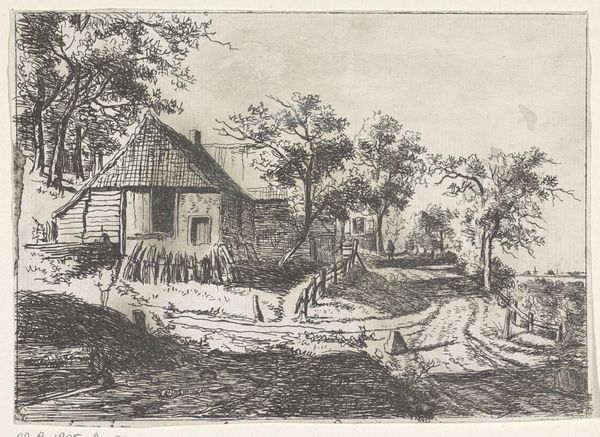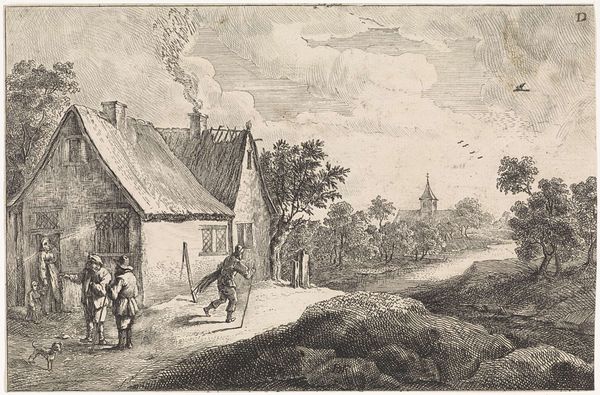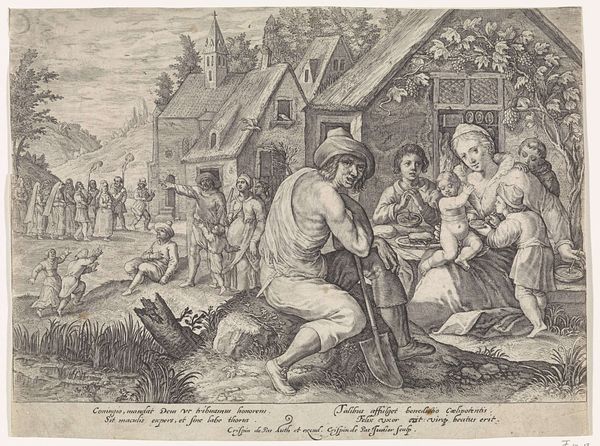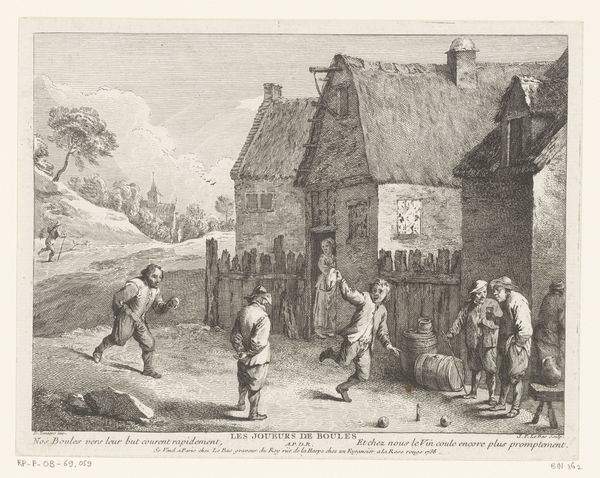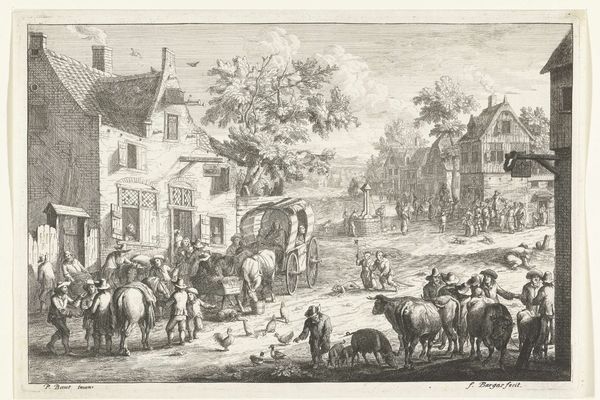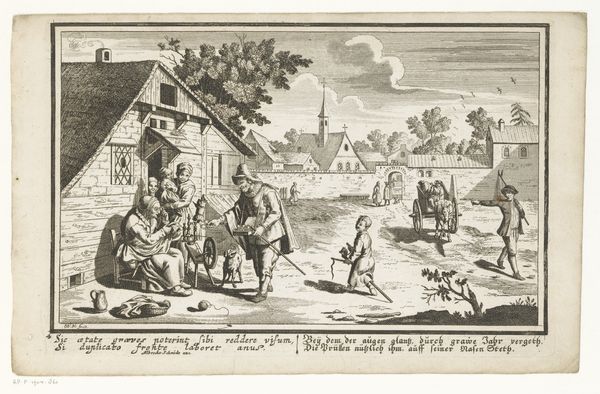
print, etching
#
narrative-art
#
dutch-golden-age
# print
#
etching
#
landscape
#
genre-painting
Dimensions: height 411 mm, width 490 mm
Copyright: Rijks Museum: Open Domain
Editor: This is “Beleg van Gulik in 1610,” an etching made in 1611 by Balthasar Florisz. van Berckenrode, currently residing at the Rijksmuseum. The scene teems with life—a tavern scene spilling into the yard. I'm struck by the energy, but I'm not quite sure what's going on. What do you see here? Curator: Well, on one level, it depicts a common tavern scene of that period, folks enjoying games, drinking, and music. But the title hints at a deeper story, and stories are always carried by symbols. Editor: How so? Curator: Consider the ox skull prominently displayed on the building—skulls often point to mortality and transience, reminders even amid revelry. The "siege" referenced in the title—perhaps all the distractions keep you blind from reality. Does that make sense? Editor: That's a really interesting connection. So the ox skull, that is almost centered in the print, combined with the title adds more meaning to what looks like just people drinking. So many of the people appear to be looking away from it or perhaps are drunk and don’t notice. What could be some interpretations of this in relation to genre painting? Curator: In that way the artwork adopts and modifies a trope within genre paintings that reflects and speaks about moral decline, and how symbols of joy blind those looking on the situation, or characters, present in it. Editor: I never thought to look for symbols like that! It makes me wonder about what other hidden meanings are in artworks that seem normal at first. Curator: Exactly! These works remind us of the enduring power of visual symbols and our shared history. It’s all a giant reminder of life and the world around us, or at least it tries to be.
Comments
No comments
Be the first to comment and join the conversation on the ultimate creative platform.
